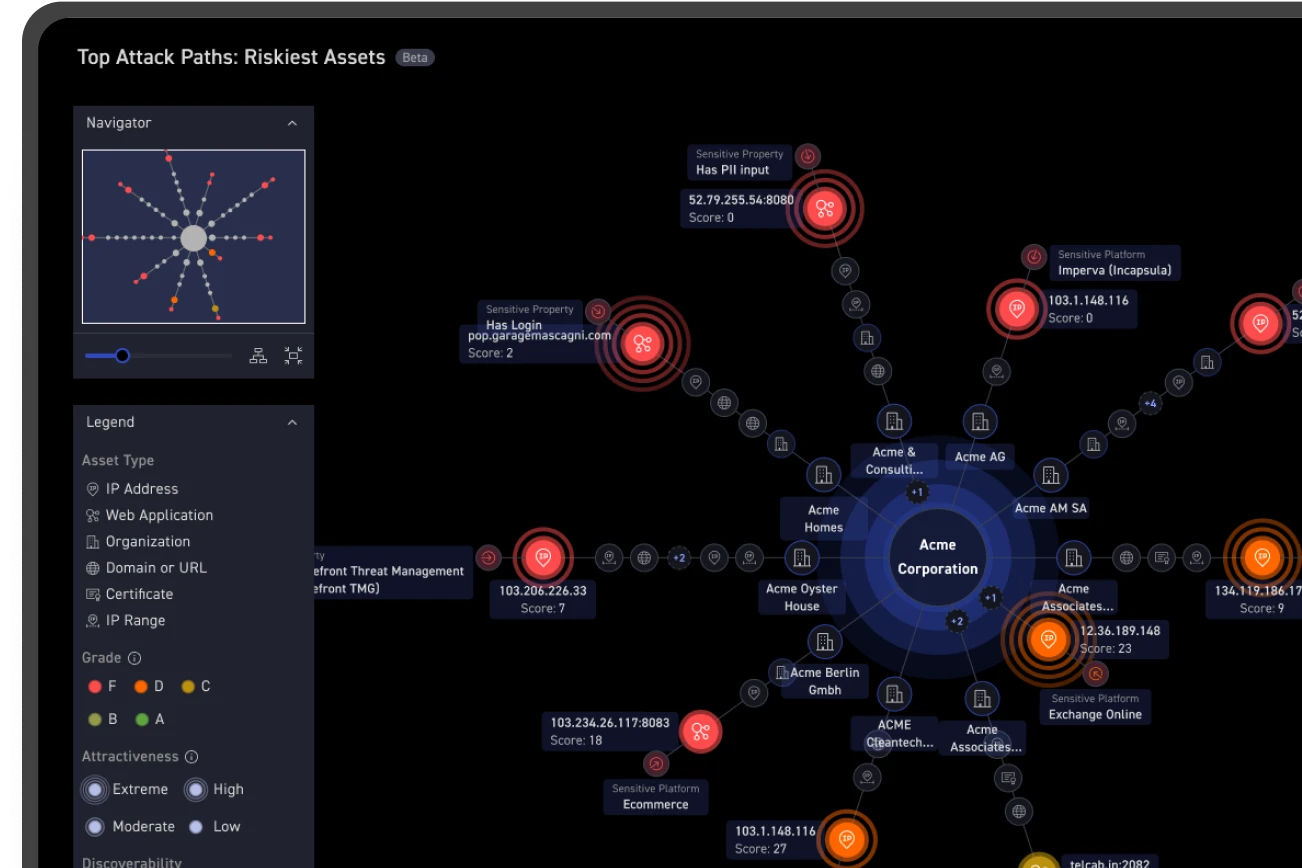The Original Promise: EASM as a Visibility Engine
External Attack Surface Management (EASM) emerged with a bold promise: to illuminate the dark corners of an organization’s internet-facing infrastructure. It was sold as a panacea for “you don’t know what you don’t know,” offering security leaders the ability to see everything attackers could see. The expectation was straightforward—feed the EASM solution a few IP ranges or domains, and it would map your exposed assets, vulnerabilities, and risks.
But here’s the reality check: many early EASM tools barely scratched the surface.
Where Legacy EASM Fell Short
The earliest wave of EASM tools were largely glorified search engines. They required “seed data”—IP ranges, known domains, CIDRs, or SSL certs. In short, they could only find what you already suspected existed.
These limitations created three critical problems for security teams:
- Incomplete Discovery: Anything not directly tied to the provided seeds—such as assets spun up by a marketing agency on a rogue AWS account or an M&A-acquired subsidiary's infrastructure—remained hidden. Real-world blind spots were left entirely hidden.
- High Operational Overhead: Security teams were burdened with constant tuning. Adding new domains, removing false positives and validating asset ownership is a manual grind, and often requires spreadsheets just to keep up.
- No Business Context or Risk Prioritization: Legacy tools operated like port scanners with nicer dashboards. They found open services, but not the significance behind them. That meant security teams were flooded with thousands of low-value findings, with no clarity on which three systems were truly exploitable and critical to business operations.
As one industry report put it bluntly, “EASM tools created as many blind spots as they claimed to solve.”
A Better Way: From Seed-Based Scanning to Attacker-Centric Discovery
So what’s the fix?
The future of EASM isn’t about feeding tools known IPs. It’s about understanding your organization the way an attacker does. That means:
- No Seed Inputs Required: True attacker-centric discovery begins with no prior information. It uses external signals, correlations, and attribution models to identify everything tied to your business—even assets your IT or GRC teams don’t know exist.
- Organizational Awareness: Mature EASM solutions don’t just find IPs; they map the entire business structure. Subsidiaries, third-party dependencies, shadow environments—everything gets connected to its rightful owner in the org chart. This is what turns asset discovery into actionability.
- Context-Rich Risk Prioritization: Instead of triggering alerts for every open port, next-gen EASM applies a risk lens. It asks: Is this asset discoverable by attackers? Is it exposed? Does it contain sensitive data? Is there an exploit in the wild? The result is a prioritized list of real threats, not false alarms.
This approach flips the model—from “scan what you tell me” to “show you what attackers already know.”
The Proof is in the Outcomes
In practice, attacker-centric EASM routinely uncovers vast quantities of blind spots in large enterprises. During one proof-of-value engagement with a Fortune 500 firm, an attacker-oriented discovery model revealed that nearly 30% of the organization’s attack surface was unknown to internal teams. Not miscategorized—unknown. That included legacy domains with exposed login portals, forgotten S3 buckets hosting sensitive data, and third-party code repositories tied to core apps.
More critically, this model doesn’t stop at discovery. By layering on black-box security testing—mirroring how an attacker would exploit a vulnerability—these platforms can validate actual exposure. This eliminates false positives and allows security teams to focus resources on verified, business-critical risks.
Why This Matters Now
As security leaders, we’re judged not by how many CVEs we scan, but by how effectively we reduce exploitability. That means knowing our true external footprint, understanding what’s valuable, and ensuring it’s secure.
But today’s IT environment is decentralized, cloud-first, and fast-moving. Developers spin up environments with a credit card, marketing teams can launch microsites in a weekend, M&A activity pulls in unmanaged infrastructure and EASM must match this pace with automation, improved context, and attacker awareness.
And yet, many organizations are still relying on seed-based, scan-and-forget tools built for a different era.
Where External Attack Surface Management Must Go Next
To keep up with the expanding threat landscape and shrinking tolerance for risk, the future of EASM must evolve along three vectors:
- Autonomous Discovery and Attribution: Fully automated, zero-input discovery that doesn’t rely on seed data. Every asset is mapped to its organizational owner—at scale and with evidence.
- Risk-Aware Prioritization: Prioritization should be driven by real attacker behavior. Which assets are discoverable? Which are attractive? Which are vulnerable and connected to business-critical systems?
- Continuous Validation and Testing: EASM must go beyond passive scanning. Active, black-box testing techniques must be embedded to confirm risk and reduce noise. This is how we solve the gap between "knowing" and "fixing."
Final Thoughts: From Promises to Real Outcomes
EASM promised visibility. For many, it delivered dashboards—but not answers.
The next phase of EASM isn’t about seeing more. It’s about seeing what matters—and taking action. That requires ditching legacy assumptions, embracing attacker-centric perspectives, and investing in solutions that automate discovery, attribution, validation, and prioritization at global scale.
Security leaders need more than “alerts.” They need proof. Proof of exposure, proof of exploitability, and proof of risk reduction.
The visibility revolution isn’t over. It’s just getting started. And the tools that deliver on that original promise—without asking you to draw the map for them—will be the ones that define the future of cybersecurity.



